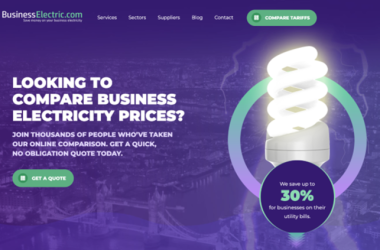Why Most SaaS Marketing Plans Break as You Grow
A lot of SaaS companies start out with scrappy, reactive marketing—some content here, a few paid ads there, and maybe an outbound campaign run through a founder’s LinkedIn. And that’s fine when you’re validating product-market fit. But once you start pushing toward $5M–$10M ARR, that same duct-taped system begins to crack.
What once worked to bring in leads now delivers diminishing returns. CAC starts creeping up. The sales team complains about lead quality. And leadership wants predictable, repeatable growth—but your marketing feels anything but scalable.
To grow efficiently, you need a strategy that aligns resources to results, cuts out waste, and builds momentum instead of constantly resetting.
Start With Your Funnel, Not Your Channels
One of the most common missteps SaaS companies make is jumping straight into channels—“We need more paid media” or “Let’s hire a content marketer”—without zooming out to assess the actual funnel.
Before you touch a channel, ask yourself:
- Where are we losing people—awareness, consideration, or conversion?
- Which offers or campaigns have actually influenced revenue?
- What are our most common sales objections, and are we addressing them upstream?
A well-built SaaS funnel doesn’t treat MQLs like a vanity metric. It moves people through each stage with intent. That means aligning content, ads, email, and sales enablement around the actual questions your audience has at each point of their journey.
Map Resources to ROI, Not Activity
Throwing money at every shiny tactic is how companies burn out their budgets before they scale. Instead, treat your marketing like a portfolio: allocate resources based on expected return, but allow room for strategic bets.
Some ways to approach this:
- Core investments: Your proven channels—maybe Google Search, high-performing content, or retargeting ads—should get the bulk of your spend and effort.
- Growth bets: These are newer channels or tactics you’re testing. Allocate limited budget with clear success criteria.
- No-go zones: Tactics that underperformed? Archive them, learn from them, and move on.
The key is having clear guardrails. Every tactic in your strategy should tie back to a metric that ladders into pipeline or revenue—not just impressions or clicks.
Build Once, Use Many Times
Efficiency comes from reuse, not reinvention. One high-quality webinar can become a gated lead magnet, five blog posts, two email sequences, and 20 social posts. One customer interview can fuel your homepage headline, a testimonial video, and an outbound script.
Audit your content assets like a product backlog. What can be updated, repurposed, or re-segmented for different personas or stages of the funnel?
This isn’t about cutting corners. It’s about getting maximum leverage from the assets you already have—especially with a lean team.
Why Tech Stack Simplicity Matters More Than Fancy Tools
At some point, every scaling SaaS company is tempted by the Martech rabbit hole. Tools promise automation, personalization, AI-powered everything. But complexity kills efficiency if your team can’t keep up.
Choose tools that:
- Integrate easily with your CRM
- Are manageable by your current team (without constant agency help)
- Provide real-time reporting on campaign performance
Before you add anything new, ask: is this solving a real pain, or just adding one more dashboard we won’t check?
When to Bring in a B2B SaaS Growth Agency
There comes a point where your internal team hits a wall—either in terms of time, experience, or capacity. That’s when working with a B2B SaaS growth agency can give you a serious edge.
The right agency doesn’t just run ads or write blogs. They help you:
- Diagnose where your funnel is leaking and how to fix it
- Develop a strategy tailored to your ICP and stage of growth
- Create campaigns that are CRO-optimized, not just pretty
- Integrate performance feedback loops so you’re learning and improving each month
What matters most is that the agency understands SaaS metrics, product cycles, and the pressure of hitting board-level growth targets.
Don’t Confuse Scale With Complexity
Scalable marketing isn’t about doing more—it’s about doing the right things better. That might mean fewer campaigns, but with clearer targeting and smarter follow-up. Or spending less on ads, but converting more of your traffic through a streamlined landing page experience.
You don’t need 10 channels. You need 2–3 that actually work. You don’t need to publish daily—you need assets that answer real buying questions and drive action.
Final Thought: Efficient Growth Isn’t Just a Nice-to-Have
SaaS growth isn’t linear. It’s lumpy. But the companies that consistently move up and to the right are the ones with a plan they can trust—and a system that doesn’t fall apart as the team scales.
A marketing strategy that’s both scalable and resource-conscious isn’t just smart—it’s necessary. Especially when every dollar, hire, and experiment counts.








